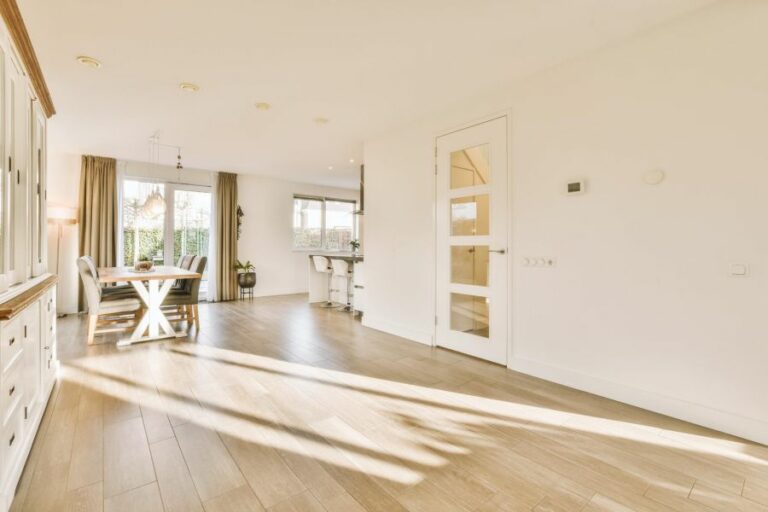Indoor Paint Colors For Small Spaces, 25 Things You Should Know
Are you finding it difficult to choose the right paint color for a small room in your home? Fret not. I’ve got you covered with great ideas to turn those tiny spaces into cozy, inviting corners of your dwelling! Let’s dive into some of the most remarkable and vibrant paint colors that will make your small space look bigger and enhance its overall aesthetic appeal.
Indoor paint colors for small spaces:
To choose an ideal paint color for a small space, consider the color palette, mood, and Light Reflectance Value (LRV). Opt for colors with high LRV, like powder blue and mint green for a more expansive feel, soft coral and creamy yellow for warmth, or off-white and greige for a neutral effect. Additionally, use lighter colors on trim, experiment with accent walls, and utilize sheen strategically to create a more open and inviting appearance.

Discover the perfect paint colors to transform your small spaces into stylish and functional havens! I have more expert tips, on-trend suggestions, and inspiring ideas to help you make the most of your cozy interiors. Read on to unlock the potential of your compact rooms.
Contents
- 1 Small Space Interior Paint Colors
- 2 Top Colors for Enhancing Small Spaces
- 3 Paint Colors that Enlarge Small Spaces
- 4 Room-Expanding Paint Color Choices
- 5 Light or Dark Paint for Smaller Spaces?
Small Space Interior Paint Colors
A well-chosen paint color can make a huge difference in enhancing the overall ambiance of a small space.
• Plan Your Color Palette
Before rushing to purchase paint, planning your color palette is important. While it’s easy to default to neutral colors like white or beige for small spaces, you may also want to consider other colors that can create a distinct effect. Here are some factors to consider when planning your color options:
– Flow and Continuity
If your small space is part of a larger open-concept design or adjacent to another room, try to ensure that the paint colors are in harmony with the surrounding spaces.
This can create a better flow and make the entire area feel more connected. For more ideas on achieving unity through color, browse through the Color Unity and Harmony guide by Iowa State University.
– Mood and Atmosphere
Certain colors can evoke specific emotions or atmospheres. Before selecting a color, think about the mood you want to create in your small space. For instance, blues and greens can create a calm, relaxing environment, while warm colors like red, orange, and yellow can energize and stimulate.
• Light Reflectance Value
When it comes to selecting the best paint color for a small space, a vital aspect to consider is Light Reflectance Value (LRV). Simply put, LRV measures the amount of visible light that a color reflects.
Higher LRVs indicate lighter colors that can make a room appear more spacious. To make the most of your small space, opt for paint colors with high LRV.
• Top Paint Colors for Small Spaces
Here are some expert-approved paint colors that can effectively transform a small space.
– Cool Colors
Using cool colors such as blues and greens can give the illusion of a more expansive room. Recommended options include:
- Powder Blue: A light, airy blue that lends a serene and calming vibe to the space.
- Mint Green: A refreshing shade that can not only make a room feel more open but also add a touch of vibrancy.
– Warmer Tones
If you prefer warmer color options, consider these inviting hues:
- Soft Coral: This warm pinkish-orange hue can give a small room a lively, inviting atmosphere without being overpowering.
- Creamy Yellow: A pale yellow color can make a room feel cozy and welcoming while still appearing more spacious.
– Neutrals for Small Spaces
Neutral colors are often the go-to choice for small spaces. However, it’s essential to select the ones that create the desired effect. Some expert recommendations include:
- Off-White: A soft white hue with a hint of gray or beige can make a space feel warm and inviting while still providing a sense of openness.
- Greige: A blend of gray and beige, greige offers the best of both worlds. It’s a versatile color that can make a small space appear larger and complement various design styles effectively.
• Additional Tips for Painting Small Spaces
– Use Lighter Paint Colors on Trim
Consider using a lighter color on your trim, molding, and wainscoting to add further depth and visually expand the space. For example, if the walls are painted in powder blue, opt for an off-white or soft gray on the trim.
– Experiment with Accent Walls
Adding an accent wall in a bold color can create a focal point and a sense of depth in a small space. Just be sure to keep the remaining walls in a lighter, more neutral shade to maintain a sense of openness.
– Utilize Sheen Strategically
Finally, take note of the paint’s sheen, which can impact the perception of a room’s size. A matte or flat finish can help hide imperfections, whereas a semi-gloss or high-gloss finish will reflect more light and create the illusion of a larger space.
By keeping these tips and color recommendations in mind, you can successfully transform the look and feel of any small space, making it feel more open, inviting, and visually appealing. Happy painting!
Top Colors for Enhancing Small Spaces
• A World of Colors Awaits
When it comes to choosing the best colors for a small space, it can be a daunting task. With countless shades available, it’s easy to feel overwhelmed. However, color can significantly impact the overall feel of any room, so it’s important to choose the right one.
• Light Colors: The Key to Spaciousness
As a general rule, lighter colors make a space feel bigger and brighter. This is because they reflect more light, thus creating an open, spacious atmosphere. Here are some light colors that work well in small spaces:
– White and Off-White
A classic choice for small spaces, white and off-white hues make rooms feel open and airy while providing a clean backdrop for any other colors or decor accents.
Stark white might not be suitable for everyone, but there’s a wide range of shades on the white spectrum, from crisp to creamy, so you can easily find the perfect one for your space.
– Cool Neutrals
Cool neutrals like light gray, beige, and taupe can create an elegant and sophisticated atmosphere while making the area feel larger. These colors work well in contemporary spaces, providing a subtle backdrop for bolder accents.
– Soft Shades of Green
Pale greens have a soothing, calming effect, making them ideal for small spaces like bathrooms, bedrooms, or any other room where relaxation is a priority. Sage, mint, or pistachio can add a touch of nature to your space, making it feel fresh and inviting.
– Light Blue and Gray-Blue
Light blue shades, as well as gray blues, create serene and calming environments that can elevate the overall mood of a room. These colors can instill a sense of spaciousness and work well for smaller bedrooms or living spaces.
• Add Depth and Contrast with Strategic Accents
While lighter colors should be the primary focus when decorating small spaces, that doesn’t mean you must entirely shy away from deeper, more vibrant colors. You can incorporate darker hues strategically to create depth and contrast, enhancing the overall design.
– Accent Walls
An accent wall in a bolder, darker color can add dimension and depth to a small space, making it feel bigger.
Choose a color that complements the primary lighter color of the room, and remember that the accent wall doesn’t always have to be the one behind your bed or sofa; sometimes, an adjacent wall can be just as effective.
– Furniture and Accessories
Dark-colored furniture pieces can anchor a room and provide a stunning contrast against light-colored walls. Additionally, bold and vibrant accessories, such as decorative pillows or artwork, can add a pop of color, brightening up the space and drawing attention to specific areas.
• Expert Tips and Recommendations
- Balance is key. While light colors are excellent for small spaces, it’s essential to strike a balance to prevent the room from being too monochromatic. Combine your chosen light color with contrasting accents or even with a patterned wallpaper to create a more visually interesting space.
- Don’t forget the ceiling. Painting the ceiling a lighter shade than the walls can create an illusion of height, making the room feel even larger. Alternatively, a statement ceiling can add visual interest, drawing the eye upward and creating depth.
- Choose the right finish. Paint sheen can affect the way a color looks in a room. Opt for a satin or eggshell finish for small spaces, as these do an excellent job at reflecting light and hiding surface imperfections.
- Test before committing. Always paint a small section of your wall with your chosen color before committing to painting the entire room. Observe how the color changes throughout the day to ensure it will work well within your space.
- Take inspiration from others. Browse online resources and design blogs for inspiration on color schemes. Websites such as Houzz and Apartment Therapy are great sources of inspiration and can help you find a color combination that works well for your small room.
In conclusion, when selecting the best colors for a small space, it’s essential to focus on light, neutral shades that make the room feel open and airy. However, don’t be afraid to add depth and contrast through accent walls, furniture, and accessories.
Always test colors before committing and take inspiration from others to create a space that is truly your own. Happy decorating!
Color | Description |
|---|---|
White | White creates a sense of lightness and space. |
Soft gray | Gray is a neutral color that adds depth without overwhelming a small space. |
Light blue | Light blue has a calming effect and can make a small space feel serene and airy. |
Blush pink | This light shade of pink adds warmth and softness to a small room without making it feel confining. |
Soft green | Soft green can make a small space feel refreshing and open, while providing a touch of natural color. |
Lavender | Lavender is a soothing color that adds a touch of elegance and subtlety to a small space. |
Off-white | Off-white works well in spaces with lower natural light, adding warmth and brightness without feeling sterile. |
Paint Colors that Enlarge Small Spaces
Making a small space look bigger is a common design challenge, and the right paint color can have a dramatic impact on the perceived size of a room.
• Light Colors: The Go-to Choice for Expanding Small Spaces
One of the most effective ways to make a small space appear larger is by using light colors. Light colors, especially neutrals, reflect more natural and artificial light, helping to create a sense of openness and airiness. This, in turn, makes walls seem farther apart and the room more spacious.
– White: The Classic Option
White is the epitome of brightness and spaciousness, making it a popular choice for small spaces. There are countless shades of white to choose from, ranging from warm tones, such as cream and ivory, to cooler hues, like snowy white and gray-white.
For a modern, minimalist look, consider cooler whites; for a cozy, inviting feel, warmer whites may be the better choice.
– Soft Pastels: Colorful and Easy on the Eyes
Tired of white? Pastel shades offer a touch of color while still providing the light and airy feel that is desired in a small space. These soft hues will not overpower the room, ensuring that the walls don’t feel like they’re closing in.
Light blues, greens, pinks, and yellows are all excellent examples of pastel colors that can make a small room feel larger.
– Grays and Greiges: Subtle yet Sophisticated
Grays and greiges (a mix of gray and beige) serve as versatile, neutral backdrops for any room. Their subdued nature allows them to blend well with various decorating styles.
Light grays and greiges work as great alternatives to white, offering a more sophisticated and modern vibe. Pair them with coordinating accents to tie the room together.
• High-Contrast Colors: Creating Depth with Bold Hues
While light colors are generally recommended for small spaces, the idea of using high-contrast colors has recently gained popularity. High-contrast colors create visual interest by playing with depth, tricking the eye, and making the space feel more dynamic.
– Dark Colors as Accents: Bold Statements
Incorporating one dark accent wall in a room is an effective way to create depth and dimension. The contrast between the dark and light walls tricks the eye, making the dark wall appear to recede and the space to be bigger.
Try adding a deep navy or charcoal gray accent wall in a light-colored room for a stunning effect.
– Two-Tone Walls: Creating Visual Height
Using two contrasting colors on the walls can create the illusion of height in small spaces with low ceilings. Paint the bottom three-quarters of the wall a darker color and the upper part a lighter hue. This technique draws the eye upward and gives the impression of taller ceilings.
• The Role of Sheen: How Paint Finish Affects Perception
The sheen of a paint finish can have an impact on the perceived size of a room as well. A paint’s sheen, or gloss level, ranges from flat (matte) to high gloss. Glossier finishes reflect more light, which can make a space appear larger, while flat finishes absorb light.
For small spaces, opt for a satin or eggshell finish, as they provide a balance between light reflection and durability. In high-traffic areas, such as hallways and kitchens, choose semi-gloss paint for its ease of cleaning and light reflection.
• Expert Recommendations: Making the Most of Your Space with Paint
As an experienced interior designer, I recommend the following tips to maximize the impact of paint color in a small space:
- Ensure proper lighting: To effectively enhance your chosen paint color, make sure the room has ample natural and artificial light. This helps to create a sense of airiness and openness.
- Use mirrors: Mirrors help reflect the light in the room, giving the illusion of depth and spaciousness. Strategically place mirrors across from windows or light sources to amplify the effect.
- Select light-colored furniture: Light-colored furniture helps maintain the open feeling of the room and prevents it from feeling crowded.
- Add pops of color: While keeping the overall color scheme light, don’t be afraid to incorporate small pops of color through accessories and artwork. This can add interest and character to the space without overwhelming it.
For additional information on paint colors and their impact on small spaces, consult resources from reputable institutions, such as the Paint Quality Institute.
In conclusion, the key to making a small space look bigger lies in the strategic use of paint colors. Opt for light, neutral hues or embrace high-contrast colors to create depth and dimension. With the right color choices, even the smallest of spaces can feel open, airy, and inviting.
Room-Expanding Paint Color Choices
Do you want to transform your small room into an illusion of a bigger, more spacious area? One expert-approved way to achieve this is to choose the appropriate paint color.
• Light Colors for Spacious Effect
Opt for lighter shades when choosing paint colors that make rooms look larger. Light colors reflect natural light, making your space feel more open and spacious. Some go-to light shades include:
- White
- Light grey
- Soft pastels
- Cream
- Pale blue
– White The Classic Choice
White is a classic choice for expanding the look of a room, as it effectively bounces off the light and creates an open atmosphere. While some may find an all-white room too stark or clinical, you can choose from a variety of white shades to suit your taste, such as:
- Off-white
- Eggshell
- Ivory
- Antique white
Try to avoid stark, pure white, as it can sometimes be too overpowering. Instead, opt for a softer tone to make the room feel comfortable and inviting.
– Light Grey A Chic Alternative
If you want to stay neutral but find white to be too plain, light grey is a chic and versatile alternative. Light grey gives an airier appearance, adding a sense of depth and sophistication to your space. Some options for light grey shades include:
- Silver
- Dove grey
- Misty grey
- Moonstone
– Soft Pastels Subtle Color
Soft pastel colors are another great option for making a room feel more spacious. These colors add a touch of warmth and personality to your space without overwhelming it. Some beautiful pastel colors include:
- Rose quartz
- Serenity
- Pale green
- Lavender
– Cream and Beige Warm Neutrals
Warm neutrals, such as cream and beige, create an inviting and cozy atmosphere without sacrificing the sense of space. They work particularly well in living rooms, bedrooms, and other areas where you want to create a relaxing environment.
– Pale Blue, Calming and Expansive
Pale blue is a popular color for making a room appear larger. By mimicking the colors of the sky and water, pale blue helps create a serene and calming atmosphere, leading to a more expansive feel. Opt for shades like sky blue, periwinkle, or light turquoise for the best effects.
• Color Combinations and Patterns
Consider incorporating color combinations and patterns in your room design to enhance the illusion of a more prominent space. Here are some tried-and-tested tactics:
- Vertical patterns: Painting vertical stripes on your walls or using vertically-patterned wallpaper can make a room look taller. When choosing colors, stick to lighter tones for maximum effect.
- Monochromatic schemes: Opting for a monochromatic color scheme, using different shades of the same color, can create a sense of harmony and cohesion, making your room look larger. Using a variety of textures and patterns within the same color family adds depth and visual interest.
- Contrasting colors: Experimenting with contrasting colors can also make your room look bigger. For example, painting your ceiling a lighter color than your walls can create the illusion of height.
• Other Tips for a Larger-Looking Room
Aside from picking the right paint color, here are some additional suggestions to make your small room appear larger:
- Maximize natural light: Keep window treatments minimal and use sheer curtains to allow natural light to flow into the room.
- Evaluate furniture size: Choose furniture that is the appropriate scale for your room. For example, using a small-scale, low-profile sofa in a living room can make the overall space feel larger.
- Incorporate mirrors: Mirrors reflect light and make rooms look more prominent. Place a mirror opposite a window to help bounce light around the space.
- Opt for vertical storage: Utilize vertical storage solutions, such as tall bookcases and shelving units, which draw the eye upwards and create a more expansive feel.
In conclusion, the best colors to make a room look bigger are light shades, such as white, light grey, pastels, cream, and pale blue. Utilizing color combinations, patterns, and other design elements can also contribute to the illusion of a larger space.
Ultimately, it’s essential to consider your unique taste and preferences, as well as the overall design of your home, when choosing the perfect paint color. For more information on the psychology of colors in interior design, check out this article from Color Matters.
Light or Dark Paint for Smaller Spaces?
When it comes to choosing the right color for small spaces, there is a common misconception that painting a room with light shades will make it appear larger.
However, this is not always the case. Both light and dark colors can serve different purposes, and the choice largely depends on factors such as personal preference, the purpose of the room, and the desired mood or atmosphere.
• Benefits of Light Colors in Small Spaces
– Creating the Illusion of Space
Light colors, such as white, cream, and light gray, are known to create the illusion of a larger space because they reflect more natural and artificial light. This, in turn, makes the room feel airier and more open.
For this reason, light colors are often recommended for small spaces like a small bedroom or living room.
– Versatility and Timelessness
Light colors are versatile and can easily complement a wide range of interior styles and other colors. They also have a timeless appeal, meaning they are less likely to go out of style quickly.
This is particularly beneficial if you plan on staying in your home for a long time or if you are looking to sell your property.
– Encouraging a Calming and Relaxing Atmosphere
Light shades often evoke feelings of serenity and calmness, making them ideal for spaces where you want to relax or unwind, such as bedrooms and bathrooms.
• Benefits of Dark Colors in Small Spaces
– Adding Depth and Character
While light colors may give the illusion of more space, dark shades can add depth and character to a room, making it feel cozy and inviting. Dark colors, like navy blue or deep green, can create a dramatic and sophisticated look that is perfect for an intimate and luxurious setting.
– Concealing Imperfections
Dark colors can help hide imperfections in the walls or furniture, making them a practical choice for spaces with architectural flaws or older pieces.
– Focusing on Functionality
In some cases, the purpose of the space can provide a clue as to whether dark or light colors are more suitable. For example, darker shades might be more appropriate to avoid glare or reflectivity if a small space is used primarily for watching movies or working on a computer.
• Factors to Consider When Choosing a Paint Color
– The Amount and Direction of Natural Light
Before choosing a color, consider the amount of natural light in the room and the direction it comes from. Rooms with limited natural light can benefit from lighter shades to help brighten the space.
The direction of light can also play a role in the color temperature your room receives, dictating whether you should look for warmer or cooler shades.
– The Desired Mood and Atmosphere
Consider the mood you want to evoke in the room. Dark colors might be more suitable if you’re aiming for a cozy, intimate atmosphere. Light colors would be more appropriate if you’re after a calm, airy, and serene vibe.
– Architectural Features
Is there a feature in the room, such as a fireplace or a unique architectural detail, that you want to highlight? Choosing a contrasting color can help draw attention to these features or even make them appear more prominent.
• Recommendations and Tips
Here are some recommendations and tips to help you choose the right color for your small space:
- Consider using a combination of light and dark shades to create contrast and visual interest. For example, you might choose a light color for the walls and a dark color for the trim or built-in furniture.
- Use different shades of the same color to create a sense of depth and sophistication. This can help make the space feel more substantial without being overpowering.
- If you’re leaning towards a dark shade, ensuring the room has adequate lighting is essential. Consider adding floor lamps, table lamps, or other sources of light to create a balanced and comfortable atmosphere.
- Test paint samples on your walls before committing to a color. Observe how the shades look in different lighting conditions and times of day to ensure you’re happy with your choice.
In conclusion, both light and dark colors have their benefits in small spaces. The choice ultimately depends on personal preference, the purpose of the space, and the desired atmosphere.
By considering factors like natural light, mood, and architectural features, you can make an informed decision and create a space you’ll love.







